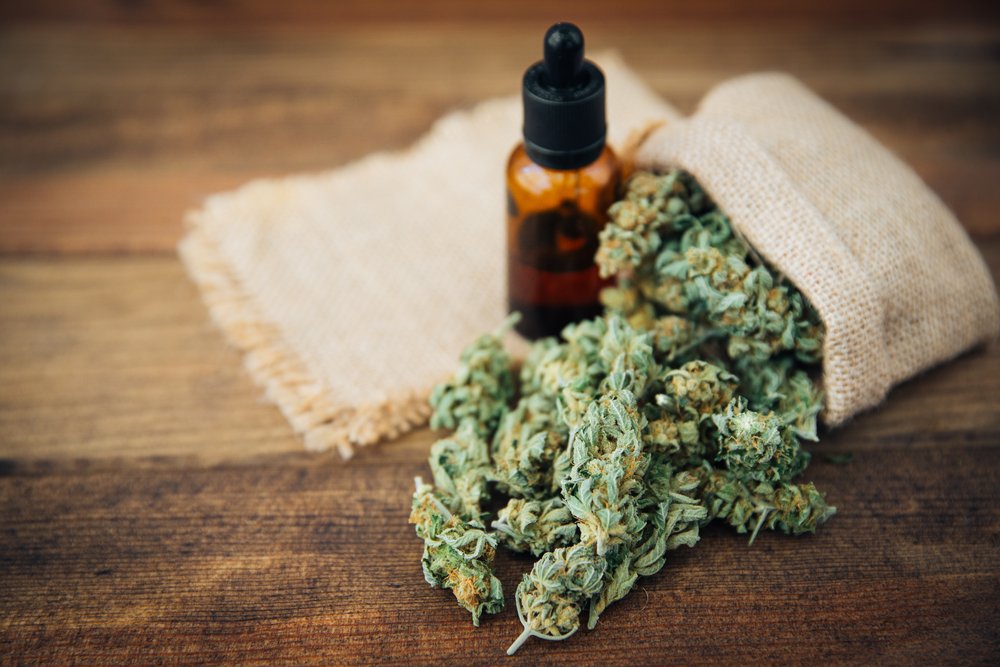Cannabinoids Could Help Manage EB-related Pain, Study Suggests

Oral use of cannabinoids — derivatives of cannabis — could help manage pain and the urge to scratch in epidermolysis bullosa (EB) patients, according to a study that evaluated three case reports.
The study, “Combined tetrahydrocannabinol and cannabidiol to treat pain in epidermolysis bullosa: a report of three cases,” was published in the British Journal of Dermatology.
EB is a genetic condition characterized by skin that easily breaks, leading to chronic pain and itchiness that are difficult to manage.
Most of the time, EB patients take opioids, both orally and applied to the skin. The use of opioids often starts when patients are young, and can lead to complications such as resistance and dependence.
Cannabinoids have been used as an alternative to opioids in various chronic pain-related conditions.
Researchers reported the cases of three adults with different types of EB who used a combination of cannabinoids (tetrahydrocannabinol and cannabidiol) as an alternative therapy to manage EB-related pain.
The first patient was a 64-year-old woman diagnosed with junctional EB who reported pain of 9/10 on the visual analogue scale (VAS).
She used oral paracetamol and opioids such as oxycodone, as well as morphine applied on the skin to manage the pain. During the study, she tested a mixture of cannabidiol (CBD) and tetrahydrocannabinol (THC) applied each day sublingually.
Three months after treatment, her pain decreased to 1-4/10 on the VAS scale, and after six months, she stopped using oxycodone every day.
In the following year, topical morphine was replaced with a mixture of cannabinoids that were applied to the skin. This not only helped manage pain, but also reduced itchiness.
The second patient was a 41-year-old man diagnosed with junctional EB. He had been treated for pain for over 10 years with oral paracetamol, ibuprofen, and oxycodone, as well as topical morphine.
The use of a mixture of CBD and THC applied sublingually caused his pain to decrease from 9/10 to 3/10 on the VAS scale. He also stopped using oxycodone and topical morphine and reported less urge to scratch his wounds.
However, he had to stop the cannabinoids because his health insurance no longer covered them. He was hospitalized after a skin exacerbation and was put on prednisolone, which provided only moderate pain release.
The third patient was a 36-year-old man diagnosed with recessive dystrophic EB. He had chronic pain and itchiness, junction of the fingers, and skin cancer on his hands.
His pain treatment included topical morphine, oxycodone, paracetamol, and locally injected dexamethasone. However, he experienced adverse side effects from the opioids.
His pain improved after he started smoking cannabis, which allowed him to stop taking opioids. His pain returned after a cancer-related crisis, so he combined the smoked cannabis with sublingual cannabinoid oil.
The treatment caused a significant reduction in pain and itchiness. The patient reported that the combination of cannabinoids was superior to any previous treatment.
“The different etiologies of pain in EB require tailored interventions, and therefore pain care is optimized through combined drug treatments and psychological interventions,” researchers said.
“However, the limited effectiveness of conventional analgesics stresses the fact that the gold standard for pain care in EB has yet to be established, hence motivating clinicians to consider alternative treatments.”
It is worth noting that the cannabinoids reduced not only EB-related pain, but also the urge to scratch. These symptoms are the most difficult to manage during EB treatment.
Although the results of these cases are encouraging, further studies are needed to fully understand the potential of cannabinoid-based medicines in pain management for EB.






